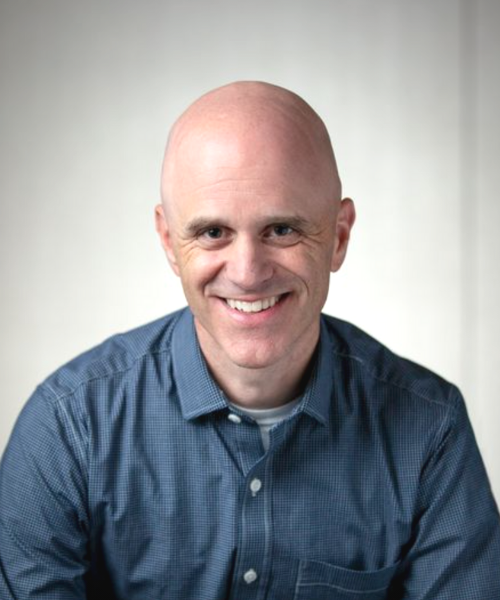
The following is an excerpt from The Power of Teaching Vulnerably: How Risk-Taking Transforms Student Engagement by David Rockower.
The following is an excerpt from The Power of Teaching Vulnerably: How Risk-Taking Transforms Student Engagement by David Rockower.
“The difficult thing is that vulnerability is the first thing I look for in you and the last thing I’m willing to show you. In you, it’ s courage and daring. In me, it’ s weakness.” —Brené Brown, “The Power of Vulnerability”
In 2010, researcher, speaker, and author Brené Brown gave what would become one of the most-watched TED Talks of all time. She spoke about the power of vulnerability and why we should choose courage over comfort. Her words resonated with me and changed the way I think about leaning into discomfort. She defines vulnerability as “uncertainty, risk, and emotional exposure” (Brown 2010). I started to think about school and how often we ask students to walk into uncertainty, risk, and emotional exposure (every day!). But what about teachers? What about me?
I think many of us protect ourselves from emotional exposure. Often, our need to appear confident and competent and in control prevents us from taking risks. But how can we ask our students to be vulnerable if we aren’t modeling it ourselves? Certainly, there are limits; we can’t overshare, and we need to be sensitive to the personal experiences of our students. But I think we can invite opportunities to take risks.
As I thought about Brown’s definition of vulnerability, I began to wonder what actions I’d taken (or avoided taking) as a teacher that required uncertainty, risk, and emotional exposure. I reflected on the stories I told my students, and how they loved to hear about my childhood adventures. Though I typically stuck to safe stories, I would occasionally dip my toe into something that made me a bit uneasy: the loss of a close grandparent, how I was embarrassed by my principal in first grade, and what it was like to be one of the only Jewish boys in my school. Over time, I began to talk more about my hobbies outside of school. Students enjoyed hearing about my bread-baking adventures, and of course, tasting some of my homemade sourdough loaves. They thought it was cool when I showed them my first 5K race results—even though (or maybe especially because) several of them finished well ahead of me. Sharing these stories required personal vulnerability.
I also looked back at the times I regretted saying something to a student or a whole class. I’d go home feeling guilty for taking out my frustrations on everyone instead of looking inward. When I had a class that was consistently off-task, I made it about the students, tried to explain how they were being disrespectful. Had I been honest with myself, I would have recognized the fact that I may have been boring them, and some of them might have been dealing with personal struggles. Instead, I pulled one of the boisterous students aside and scolded them for their behavior. In the car on the way home, I’d shake my head, wishing I’d handled it differently. That self-reflection was important, and it eventually led to a change in how I viewed “misbehavior.” I’m now better able to see those behaviors as warning signs, telling me that I need to adjust my lesson, tone, or word choice. It also forced me to think about apologizing. We are always encouraging our students to apologize for their mistakes, but how often are teachers willing to do this? I couldn’t think of many times when I’d offered a genuine apology to a student—doing so requires relational vulnerability.
Finally, I considered how often I’d shied away from crucial conversations in the classroom. There were plenty of times when students asked questions about topics that made me feel uncomfortable. I was ill prepared to lead these discussions—either because I was afraid that their guardians wouldn’t want them talking about certain topics in school or because I wasn’t well enough informed to lead such a conversation. I’m sure I said something like, “That’s important, but you should talk to your parents about it.” At the time, I thought I was doing the right thing, but in reality, I was only trying to protect my ego. I convinced myself that the issues were “too political” or “not appropriate” for the age group. But what might we have all learned from one another after dialoguing about the topic? I would never know, because I was too scared of retribution. That was foolish. I’ve since come to realize that some of the best conversations in my classroom occur when I’ve invited students to talk about class, race, LGBTQIA+, and equity issues. This has required me to look inward, examine my own biases, read, research, and find colleagues or community members to help me prepare for and lead these conversations. Engaging in critical conversations requires dialogic vulnerability.
After reflecting on my twenty-three years as a classroom teacher and spending the last two conducting an action research project in my classroom around this idea, I believe that teacher vulnerability helps to establish strong student–teacher relationships, breaks down hierarchies, builds trust, increases student engagement, and provides the foundation for a healthy school culture.
To learn more about The Power of Teaching Vulnerably visit Heinemann.com.

David Rockower is a classroom teacher in the State College Area School District and recipient of the 2017 National Middle School English Teacher of the Year award. A former Heinemann Fellow, David completed a two-year Action Research Project on the study of teacher vulnerability and its impact on student learning and school culture. Follow David on Twitter @dgrock.


